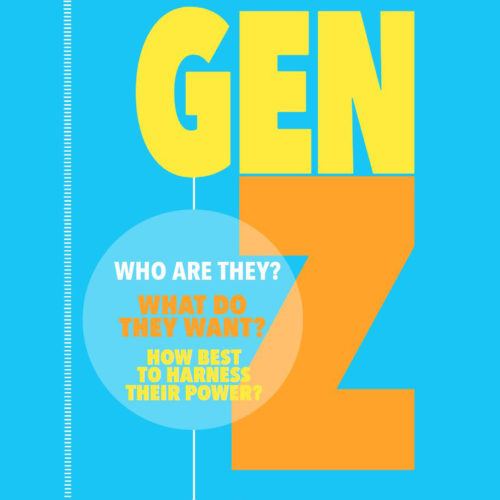Gen Z knows the power of tech and expects it to be utilized by organizations, no matter what sector they operate in. And if they are not satisfied, they “cancel” and move on.
The emphasis on purpose, change and activism can be challenging for many older leaders. Work by Megan Reitz and John Higgins of Hult International Business School finds that fundamental misunderstandings about Gen Z lead to three errors in the face of activism: over-optimism, an assumption that leaders can be apolitical, and a rush to quick fixes.
In our experience, the older generations rarely surrender without a struggle, but surrender they inevitably do. Speaking at our Digital Transformation in Action event, the digital anthropologist Rahaf Harfoush suggested that seeing this development as linear and part of a collaboration is important: “Previous generations made the investments which founded the basis for today’s technology around algorithms and so on. Ultimately, many of those algorithms and decisions are informing how young people are actually using technology.”
It is also important to acknowledge the positive potential of tech rather than becoming mired in issues such as privacy and governance which, though undoubtedly important, tend to monopolize media headlines. Increasingly there is an emphasis on the opportunities rather than the threats posed by technology.
“Digital transformation needs a range of skills, meaning there is a place for everyone involved,” said Rahul Avasthy, who leads digital transformation and experience at Abbott Laboratories. “Generalists will be valued contributors to simplify the processes, while specialists are required to implement the new techniques.”
A similarly positive view on job opportunities for Gen Z comes from IMD’s Professor Didier Bonnet, whose work focuses on digital economics, digital strategy, disruptive innovation, and the process of large-scale digital transformation for global corporations.
“As a rule, digital organizations default to automating core processes, especially repetitive and unproductive tasks,” he said. “But the bulk of existing jobs are not displaced, they are augmented. Automation takes away many of the tasks that used to bog down workflows, leaving humans to focus on more fulfilling and relevant tasks. Human-machine collaboration becomes greater than the sum of its parts.”
Robin Bordoli, CEO of the machine learning company Figure Eight, describes the job market potential as follows: “It’s not about machines replacing humans, but machines augmenting humans. Humans and machines have different relative strengths and weaknesses, and it’s about the combination of these that will allow human intents and business process to scale 10X, 100X, and beyond that in the coming years.”
If the emergence of Gen Z is inevitable and the adoption of their values equally so, what can and should organizations and their leaders do in order to shape the future?
We at Brightline Initiative have looked at digital transformations throughout the world. We believe that there are two essential elements if organizations are going to harness the very best of Gen Z to transform the future:


 Audio available
Audio available











